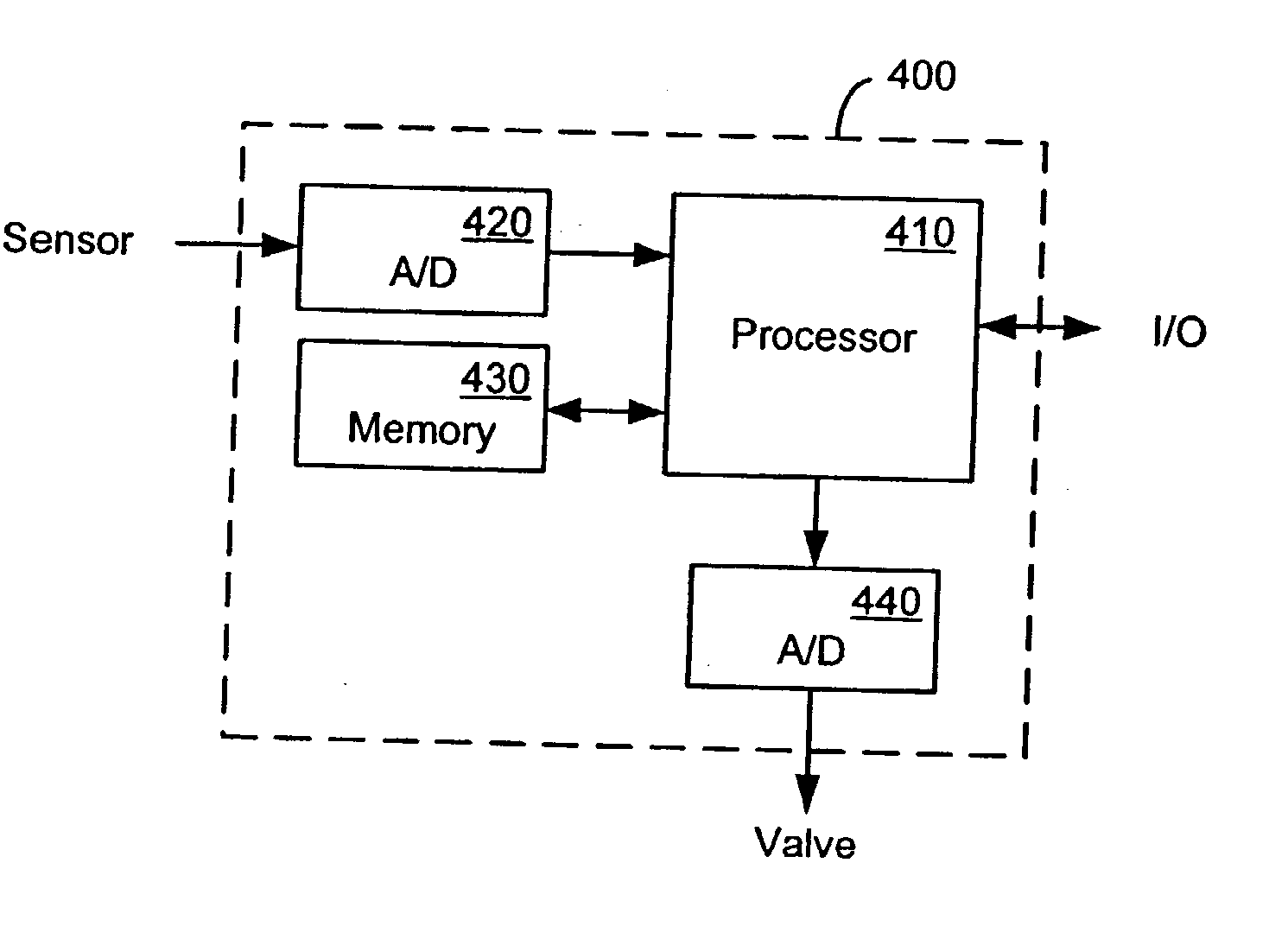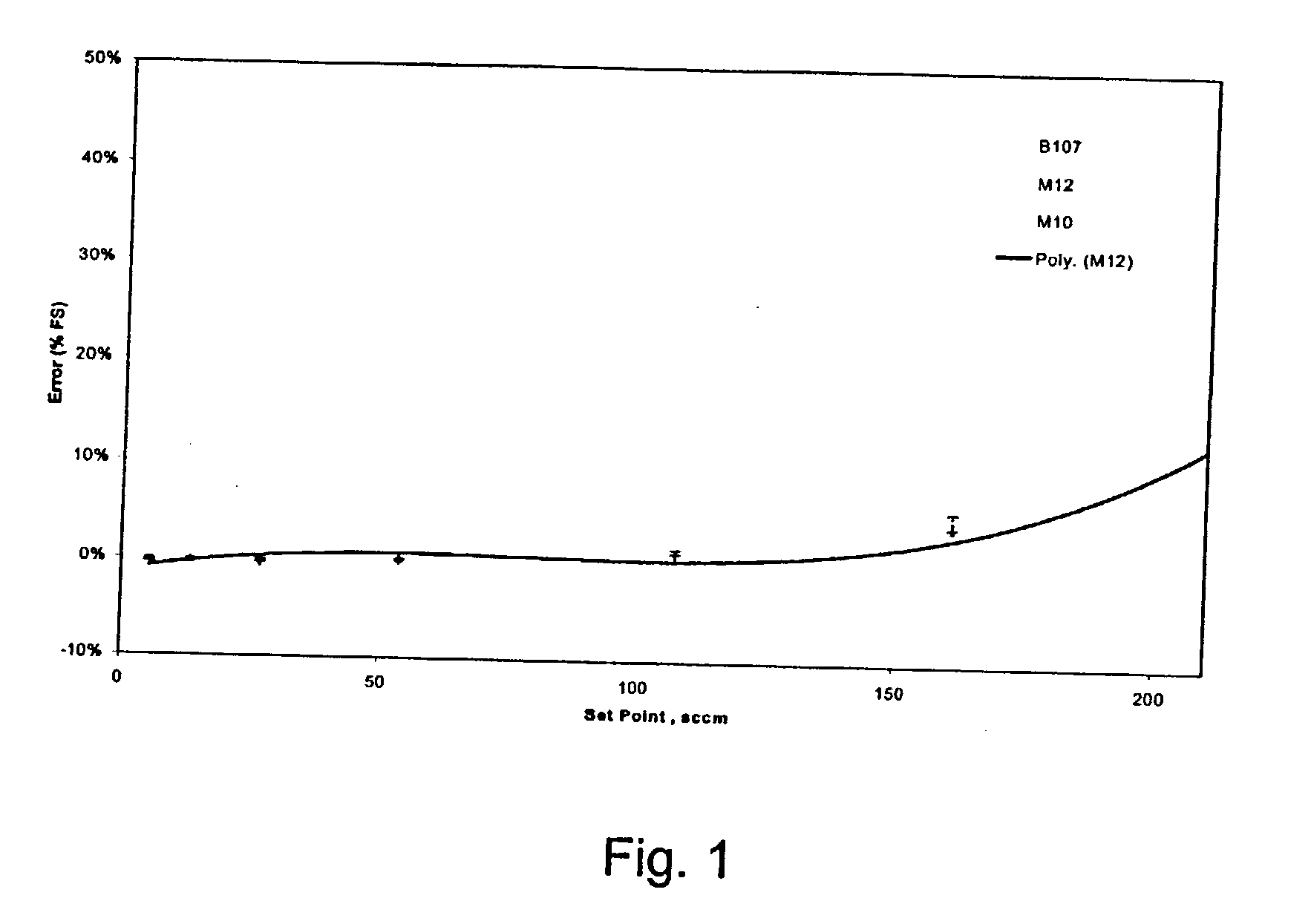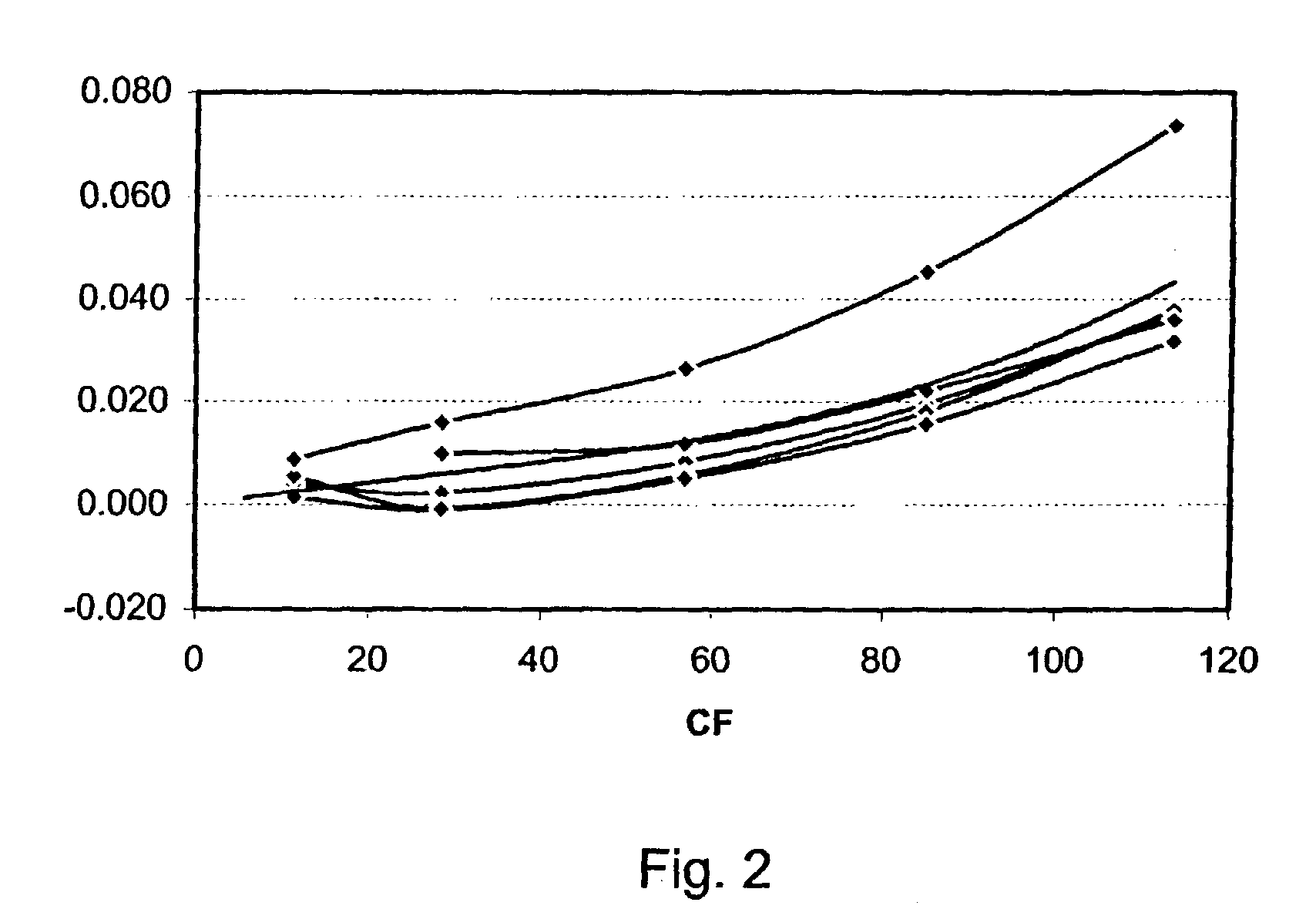System and method for mass flow detection device calibration
a detection device and mass flow technology, applied in the field of measurement devices, can solve the problems of corrosive gasses, large number of gasses, and inability to calibrate an mfc with all of these gasses
- Summary
- Abstract
- Description
- Claims
- Application Information
AI Technical Summary
Benefits of technology
Problems solved by technology
Method used
Image
Examples
Embodiment Construction
[0033] A preferred embodiment of the invention is described below. It should be noted that this and any other embodiments described below are exemplary and are intended to be illustrative of the invention rather than limiting.
[0034] Broadly speaking, the invention comprises systems and methods for improving the accuracy of mass flow controllers (MFCs) using device-specific information.
[0035] In one embodiment, a thermal MFC is calibrated with a first (calibration) gas for use with a second (process) gas. The flow of the process gas sensed by the MFC is corrected using a gas correction factor that accounts for the differences between the calibration gas and the process gas. The sensed flow is also corrected using one or more device-specific correction factors. One of the device-specific factors is based on the resistance of the flow sensor, and another of these factors is based on the split flow ratio of the MFC. Data corresponding to the correction factors is stored in a memory with...
PUM
| Property | Measurement | Unit |
|---|---|---|
| sensor resistance | aaaaa | aaaaa |
| resistance | aaaaa | aaaaa |
| mass flow | aaaaa | aaaaa |
Abstract
Description
Claims
Application Information
 Login to View More
Login to View More - R&D
- Intellectual Property
- Life Sciences
- Materials
- Tech Scout
- Unparalleled Data Quality
- Higher Quality Content
- 60% Fewer Hallucinations
Browse by: Latest US Patents, China's latest patents, Technical Efficacy Thesaurus, Application Domain, Technology Topic, Popular Technical Reports.
© 2025 PatSnap. All rights reserved.Legal|Privacy policy|Modern Slavery Act Transparency Statement|Sitemap|About US| Contact US: help@patsnap.com



